Apple released the M2 chip and its first MacBook series. Tomshardare, a famous technology media, interpreted the performance of Apple's M2 chip. The paper holds that M2 chip achieves 18% performance improvement in unspecified multi-threaded CPU tasks, and the improved 10 core GPU can also provide up to 35% graphics processing performance improvement in unspecified tasks.
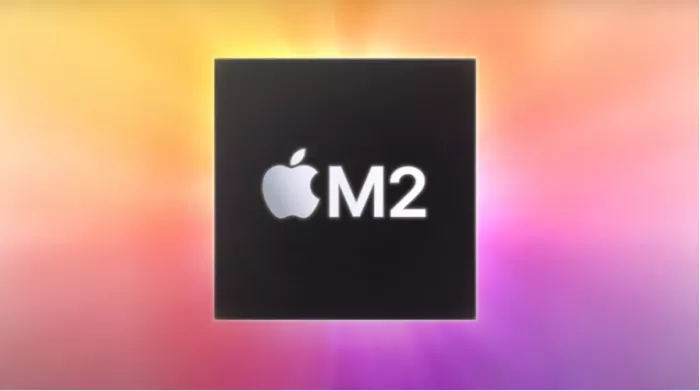
Apple also increased the maximum memory capacity of lpddr5 to 25gb. The next generation 16 core neural engine is 43% faster than its predecessor, and can process up to 15.8 trillion operations per second.
The new M2 chip is manufactured by the second generation 5nm process. Tomshardare speculates that it is probably the n5p of TSMC and has 20billion transistors. The first M2 processors will be available next month macbook Air and MacBook Pro.
The article points out that Apple's self-developed chips based on ARM architecture have revitalized the company's PC products through M1, M1 pro, M1 Max and M1 ultra series, enabling them to weaken their dependence on Intel processors and turn to more advanced chip manufacturing technology and microchip architecture. This trend continues as apple moves towards the second generation 5nm process and higher performance chip architecture.
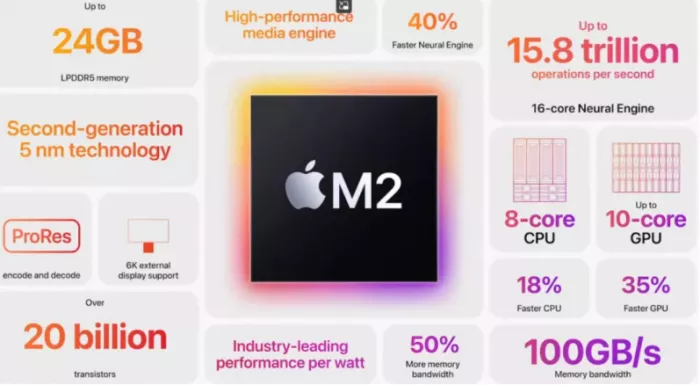
The M2 processor is equipped with up to 8 CPU cores, the same as its predecessor, with 4 high-performance cores and 4 efficiency cores. The M2 chip seems to be based on A15 avalanche+blizzard architecture, using armv8.5-a instead of armv9. Its high-performance kernel has enhanced cache. Compared with the 12MB L2 cache of M1, the shared L2 cache is 16MB; Compared with M1 processor, the four efficiency cores have the same cache capacity hierarchy.
In addition, the GPU has also been greatly upgraded, from 8 cores on the M1 chip to 10 cores. Apple said that this would help improve GPU performance by 35%, and without specifying the workload. The GPU performance of M2 is 3.6tflops per second, which is 38% higher than the 2.6 tflops floating-point operation of M1.
Its engine supports up to 8K H.264, hevc and prores encoding / decoding, and has the feature of "increasing bandwidth", enabling it to play multiple 4K and 8K data streams. As before, the chip only supports two displays, one of which has an external resolution of 6K. As apple has done in the past, we expect the company to launch different M2 models with different numbers of GPU cores.
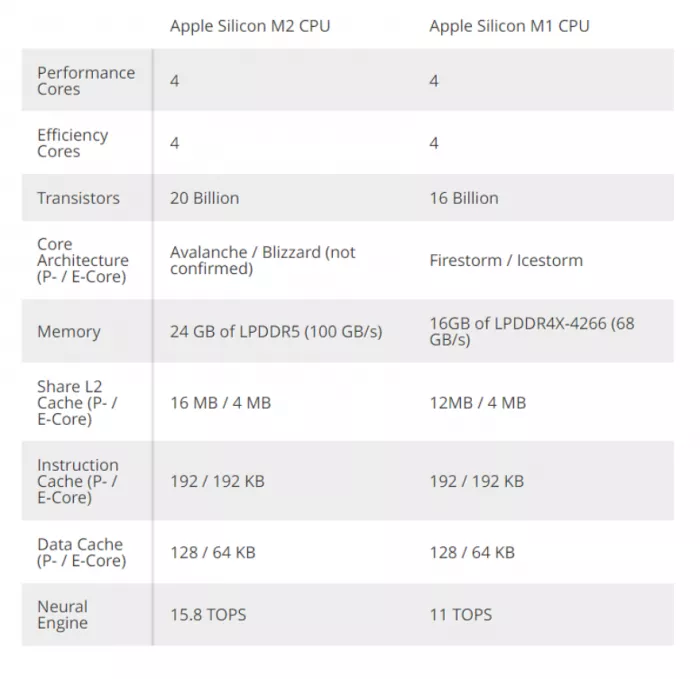
Source: tomshardware
Apple claims that the M2 GPU performs 25% better than the M1 at the same power as the M1, and 35% better than the M1 at peak power. However, in a meaningless comparison, apple compared its GPU with the GPU integrated with the Core i7, which is not used for any serious work. Apple said that at the same power, it has a 2.3 times advantage over Intel igpu, and the peak performance at 1/5 power is the same.
According to the article, apple provides up to 100gb/s memory bandwidth for CPU and GPU through up to 24GB of lpddr5 memory, which is 50% more than the bandwidth of the previous generation M1 chip. This is due to the higher lpddr5 specification than the M1 lpddr4x. The memory capacity of M2 also increased by 50% (the maximum memory capacity of M1 is 16GB). At the same time, lpddr5 memory communicates through a 128 bit wide bus.
Dedicated chips for hardware acceleration workloads are increasingly becoming the core of all chips, and apple has made progress in this regard. Apple claims that its next generation 16 core neural engine is 43% faster than the previous generation, processing 15.8 trillion operations per second, while the M1 processes 11 trillion operations per second. Surprisingly, Apple has done more work with the same number of neural cores as the M1, and attributed the performance improvement to the enhancement of the architecture. However, we do not know whether Apple will eventually provide more chip area for these devices to improve performance.
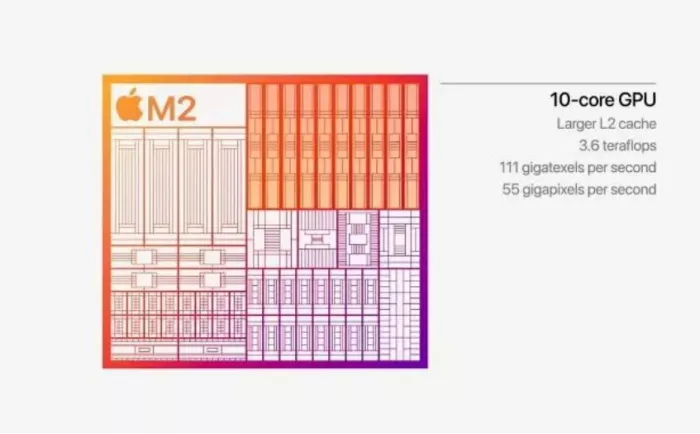
Apple uses more advanced process nodes than Intel and AMD, and continues to shift from the first generation TSMC 5nm process (5N) M1 to the second generation 5nm process, which may be TSMC n5p. Apple applied the M2 design to 20billion transistors, 25% more than the M1 processor. In addition, the M2 processor is larger than its predecessor. Given that the n5p has no density improvement and apple has added two more GPU cores, other design changes (possibly including smaller functional units) seem to have resulted in a chip with an increase of about 18% (assuming that Apple's graphics are scaled up).
Compared with TSMC N5 process in M1, n5p process is said to be 7% faster at the same power or 15% lower in power consumption at the same clock (the two cannot be combined). Apple will package these chips in the card slots of the MacBook Air and the MacBook Pro. The former will adopt a fan free design, while the latter will adopt an active cooling solution (fan) to achieve higher performance under more demanding workloads. Both air and Pro will be available in July, but Apple has not yet given a specific release date.
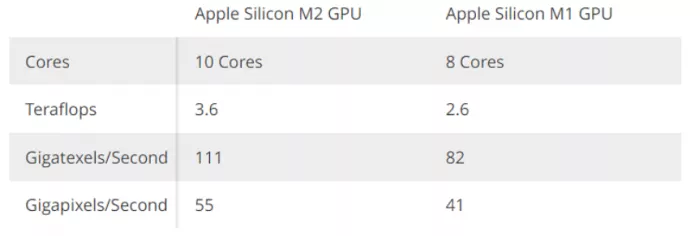
In general, the performance improvement of M2 seems to be consistent with the increase in the number of transistors and chip area, which means that the per watt performance ratio of M2 may not be as good as its predecessors. In addition, it is not surprising that the CPU performance data touted by Apple does not seem as impressive as some people expected. Because the company may have copied many outstanding design architectures of M1 chip, taking a shortcut, and also benefiting from the progress towards newer and more intensive process nodes. This time, the relatively small step from the N5 process node to the n5p brings smaller performance and power advantages, without providing an increase in density. And in the long run, the benefits of this microarchitecture seem to be much smaller. As in the past, the final judgment will be made by the third-party benchmark.